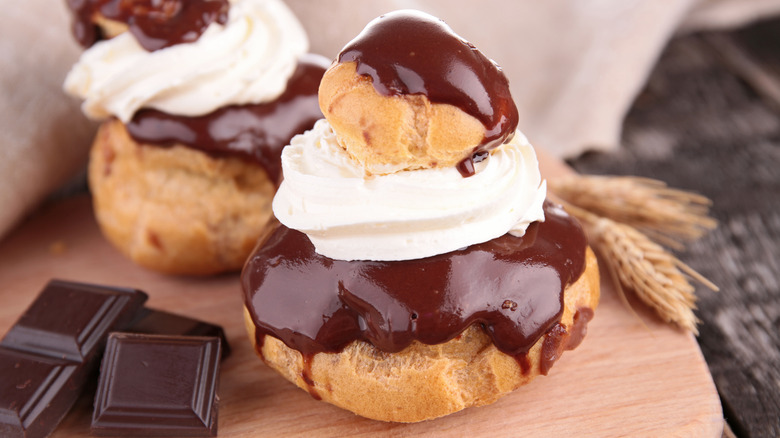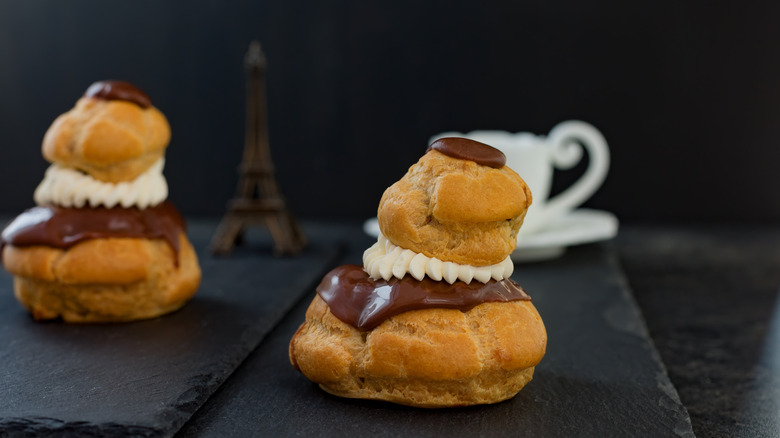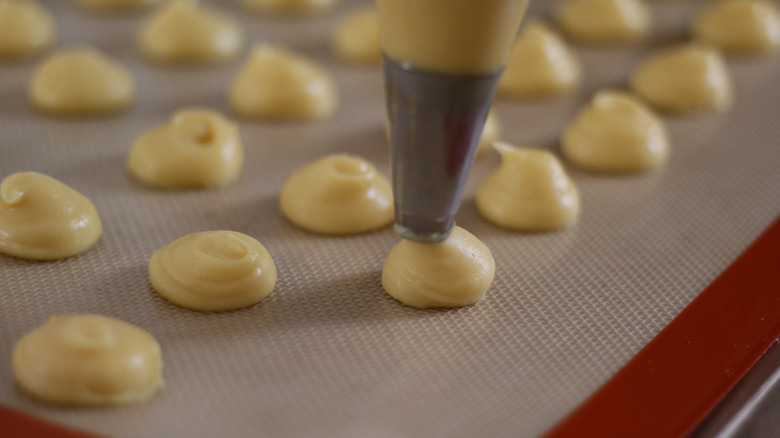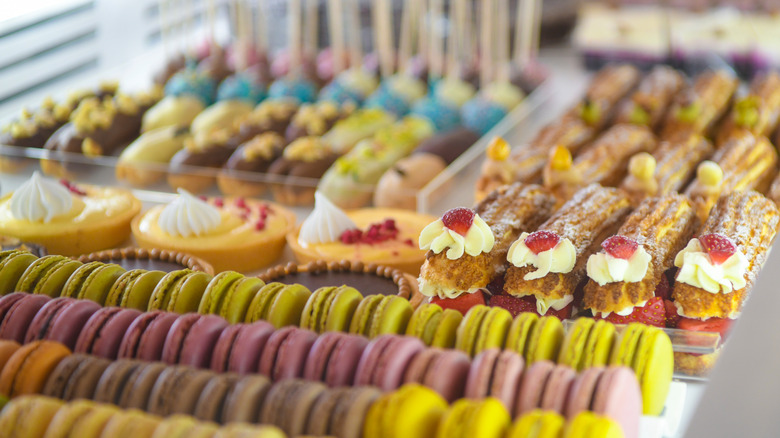Religieuse: The Traditional French Pastry That Resembles A Nun
If you were dazzled by the whimsical towers of choux pastry known as courtesans au chocolat in the Wes Anderson film "The Grand Budapest Hotel," you might be interested to know that they bear a striking resemblance to a real-life French pastry called the religieuse (per Slate).
The religieuse is a type of choux pastry found in many French bakeries. Usually filled with cream and topped with some layer of frosting or ganache, choux pastry can make a wide variety of traditional French pastries, including profiteroles (what we might call cream puffs), eclairs, Paris-Brest, or croquembouche. The Francofly explains that the pastry most similar to the religieuse is the divorcé, a dessert made with two cream puffs — one chocolate and one coffee-flavored — attached side by side with buttercream.
So there are French pastries named for cabbages, divorce, and ladies of the night. But can you guess where the religieuse got her name?
The History of the religieuse
Like many French pastries, the history of the religieuse begins with the invention of choux pastry. It's said that Catherine de Medici brought an Italian chef by the name of Pantanelli to France in the sixteenth century, where he invented the original choux pastry. Pantanelli's successor Popelini had the idea to form it into small balls, called popelins. From there, another famous chef, Antonin Carême (the father of haute cuisine) changed the name from popelins to choux, the French word for cabbage, because of their round, puffy shape.
The religieuse itself was invented around 1850 by a Parisian pastry chef named Frascati, using the choux pastry perfected by Carême. By 1929, Frascati's treat came to be known as a religieuse, the French word for nun because the squat cream puffs resembled a Catholic nun in her black and white habit. And while it might seem like a silly name, if you squint your eyes a little, you can almost see Sister Marie on her way to chapel.
How is a religieuse made?
A religieuse starts with pâte à choux (pronounced like "pat a shoe"). Choux is soft and versatile, made with a simple combination of butter, water, milk, sugar, salt, flour, and eggs. Choux lies somewhere between a dough and a batter, and it puffs up into hollow balls with a crisp exterior when baked. Those empty little balls just beg to be filled with delicious flavors, which, in the case of a religieuse, usually means crème pâtissière, or pastry cream, a thick, creamy custard made with starch and eggs. The pastry cream is usually flavored with chocolate, coffee, or vanilla, though other flavors can be found.
After the choux are assembled and filled with cream, a layer of chocolate ganache is then layered over each pastry puff, and they are held together (and sometimes topped) with ruffles of buttercream.
Where to find a religieuse
While the religieuse has yet to make it to mass market status like the eclair, croissant, kouign-amann, or King Cake, it's easy to find at most boulangeries or pâtisseries in France. One famous Parisian cafe, Dalloyau, makes a large-scale religieuse meant for sharing, called the Religieuse de Rêves, filled with chocolate pastry cream, and topped with chocolate ganache and hints of almond cream. Other famous pastry shops like Laduree have experimented with unique flavors, as in their Pistachio Religieuse. But who knows? Maybe it'll be the next French pastry to start trending in new and flashy flavors.
Probably the most famous iteration of the religieuse in recent history is a version from French pastry chef Christophe Michalak. The pastry chef serves a religieuse flavored with salted caramel that will make your mouth water at his shop in the Marais. Sounds like we all need to hop on a plane to Paris!



